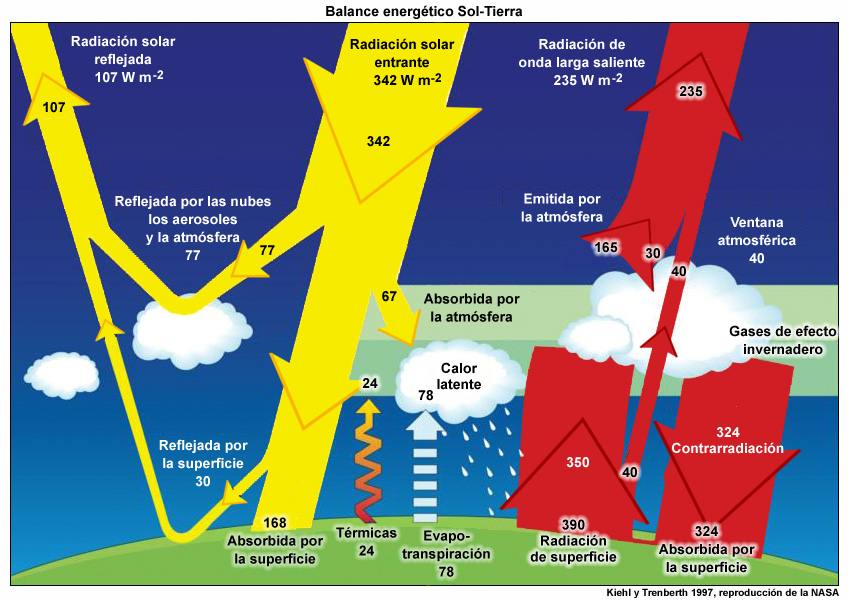Climate Detectives Projects 2022-2023
Project title: SUNRISE – SUNSET
Team: SANTA BÁRBARA
CP Santa Bárbara Lugones España 41 Student’s age: 10-11 years old
Climate change influences solar radiation and planetary albedo?
¿ Influye el cambio climático en la radiación solar y en el albedo planetario?

Our project deals with solar radiation. To do this, we have analysed a sequence of sunrises and sunsets during 3-4 months, to study how climate change affects the presence of clouds and aerosols that can artificially modify the length of days and nights, the planetary albedo and, consequently, disrupt the cycle of plants.
We have established several phases in the work:
– Record of the first solar radiation data shown by the station on each of the days, as well as the latest data, which we have related to “sunrise” and “sunset” respectively.
– Analysis of tables and graphs
– Interpretation of the “outliers” with the images of the clouds present.
– Reflection on how albedo variations influence the cycle of plants.
Nuestro proyecto versa sobre la radiación solar. Para ello, hemos analizado una secuencia de amaneceres y atardeceres durante 3-4 meses, para estudiar como afecta el cambio climático en la presencia de nubosidades y aerosoles que pueden modificar artificialmente la duración de los días y las noches, del albedo planetario y en consecuencia, trastocar el ciclo de las plantas.
Hemos establecidos varias fases en el trabajo:
– Registro de los primeros datos sobre radiación solar que muestra la estación en cada uno de los días, así como los últimos datos y que hemos relacionado con el “amanecer” y “anochecer” respectivamente.
– Análisis de las tablas y gráficas
– Interpretación los valores “anómalos” con las imágenes acerca de las nubosidades presentes.
– Reflexión acerca de como influye las variaciones del albedo en el ciclo de las plantas

We have observed that the data extracted and the subsequent elaboration of the graph did not show an arithmetic progression in terms of the hours of daylight of each day, despite the fact that in theory it should have dawned earlier and dusk later.
Looking at the Sentinel 2 data, we associate these “anomalous” values with periods of high cloud cover.
How does climate change affect cloud cover?
Increasing the earth’s surface temperature can lead to more evaporation of water, which in turn can increase the amount of water vapour in the atmosphere. This increase in water vapour can lead to the formation of more clouds. In addition, we should not underestimate the presence of aerosols and airborne particles due to pollution, especially as our school is situated only one kilometre away from an industrial estate.
Can this climate change influence planetary albedo?
– The melting of polar ice decreases the Earth’s albedo, as ice reflects sunlight more efficiently than water.
– Greenhouse gas emissions that cause climate change can also increase the amount of aerosols in the atmosphere, which can affect the Earth’s albedo.
All this creates a paradox. The increase in temperature melts the poles. At the same time, as there is less ice surface, the albedo decreases and the temperature rises, generating a vicious circle.
– How does albedo decrease influence the plant cycle?
If the albedo is low and the earth’s surface absorbs a large amount of solar radiation, plant leaves may be exposed to higher temperatures. If this temperature is too high, it can cause heat stress in plants and damage their cells, negatively affecting terrestrial vegetation.
Hemos observado que los datos extraídos y la posterior elaboración de la gráfica, no mostraban una progresión aritmética en cuanto las horas de luz de cada día, a pesar de que en teoría tenía que amanecer antes y anochecer más tarde.
Observando los datos de Sentinel 2, asociamos esos valores “anómalos” a periodos de gran nubosidad
¿Cómo afecta el cambio climático a la presencia de nubosidad?
El aumento de la temperatura de la superficie terrestre puede generar más evaporación de agua, lo que a su vez puede aumentar la cantidad de vapor de agua en la atmósfera. Este aumento de vapor de agua puede conducir a la formación de más nubes. Además, no debemos menospreciar la presencia de aerosoles y partículas en suspensión debido a la contaminación, más en tanto, que nuestro colegio se sitúa apenas un kilómetro de un polígono industrial.
¿Puede influir este cambio climático en el albedo planetario?
– El derretimiento del hielo polar disminuye el albedo de la Tierra, ya que el hielo refleja la luz solar de manera más eficiente que el agua.
– Las emisiones de gases de efecto invernadero que causan el cambio climático también pueden aumentar la cantidad de aerosoles en la atmósfera, lo que puede afectar el albedo de la Tierra.
Todo esto genera una paradoja. El aumento de temperatura derrite los polos. A su vez, al haber menos superficie de hielo, el albedo disminuye y aumenta la temperatura generándose un circulo vicioso.
– ¿Cómo influye la disminución de albedo en el ciclo de las plantas?
Si el albedo es bajo y la superficie terrestre absorbe una gran cantidad de radiación solar, las hojas de las plantas pueden estar expuestas a temperaturas más altas. Si esta temperatura es demasiado alta, puede causar estrés térmico en las plantas y dañar sus células afectando negativamente a la vegetación terrestre.

In addition to all those that solve or mitigate the effects of climate change and which are already common knowledge, such as: Using renewable energies, using non-polluting means of transport, consuming less and reusing more. We can implement some more specific ones in terms of improving planetary albedo, such as the following:
– Increasing the reflectivity of land surfaces: This can be done through the use of reflective roofs and pavements and the use of reflective paints and building materials.
– Reduce the amount of greenhouse gases in the atmosphere: Greenhouse gases, such as carbon dioxide, absorb solar radiation and retain it in the atmosphere, contributing to global warming. Reducing emissions of these gases could help lower the earth’s temperature and increase its albedo.
– Plant trees and light-leaved vegetation: Light-leaved vegetation, such as fruit trees, have a higher reflectivity than dark-leaved vegetation. Therefore, planting trees and light-leaved vegetation in urban and rural areas could increase albedo.
And above all, promoting environmental education and awareness: Environmental education and awareness is the main tool to increase understanding and action on climate change and thereby create citizens committed to the planet.
Además de todas las que solventen o atenúen los efectos del cambio climático y que son ya de conocimiento general, como pueden ser: Utilizar energías renovables, usar medios de transporte no contaminantes, consumir menos y reutilizar más. Podemos implementar algunas más específicas en cuanto a mejorar el albedo planeteario, tales como las siguientes:
– Aumentar la reflectividad de las superficies terrestres: Esto puede hacerse mediante, el uso de techos y pavimentos reflectantes y el uso de pinturas y materiales de construcción reflectantes.
– Reducir la cantidad de gases de efecto invernadero en la atmósfera: Los gases de efecto invernadero, como el dióxido de carbono, absorben la radiación solar y la retienen en la atmósfera, lo que contribuyen al calentamiento global. Reducir las emisiones de estos gases podría ayudar a disminuir la temperatura de la Tierra y aumentar su albedo.
– Plantar árboles y vegetación de hojas claras: La vegetación de hojas claras, como los árboles frutales, tienen una mayor reflectividad que la vegetación de hojas oscuras. Por lo tanto, plantar árboles y vegetación de hojas claras en áreas urbanas y rurales podría aumentar el albedo.
Y sobre todo, fomentar la educación y conciencia ambiental: La educación y conciencia ambiental es la principal herramienta para aumentar la comprensión y la acción sobre el cambio climático y con ello, crear ciudadanos comprometidos con el planeta.
This project was automatically translated into English.
Projects are created by the teams and they take the full responsibility of the shared data.
← All projects





